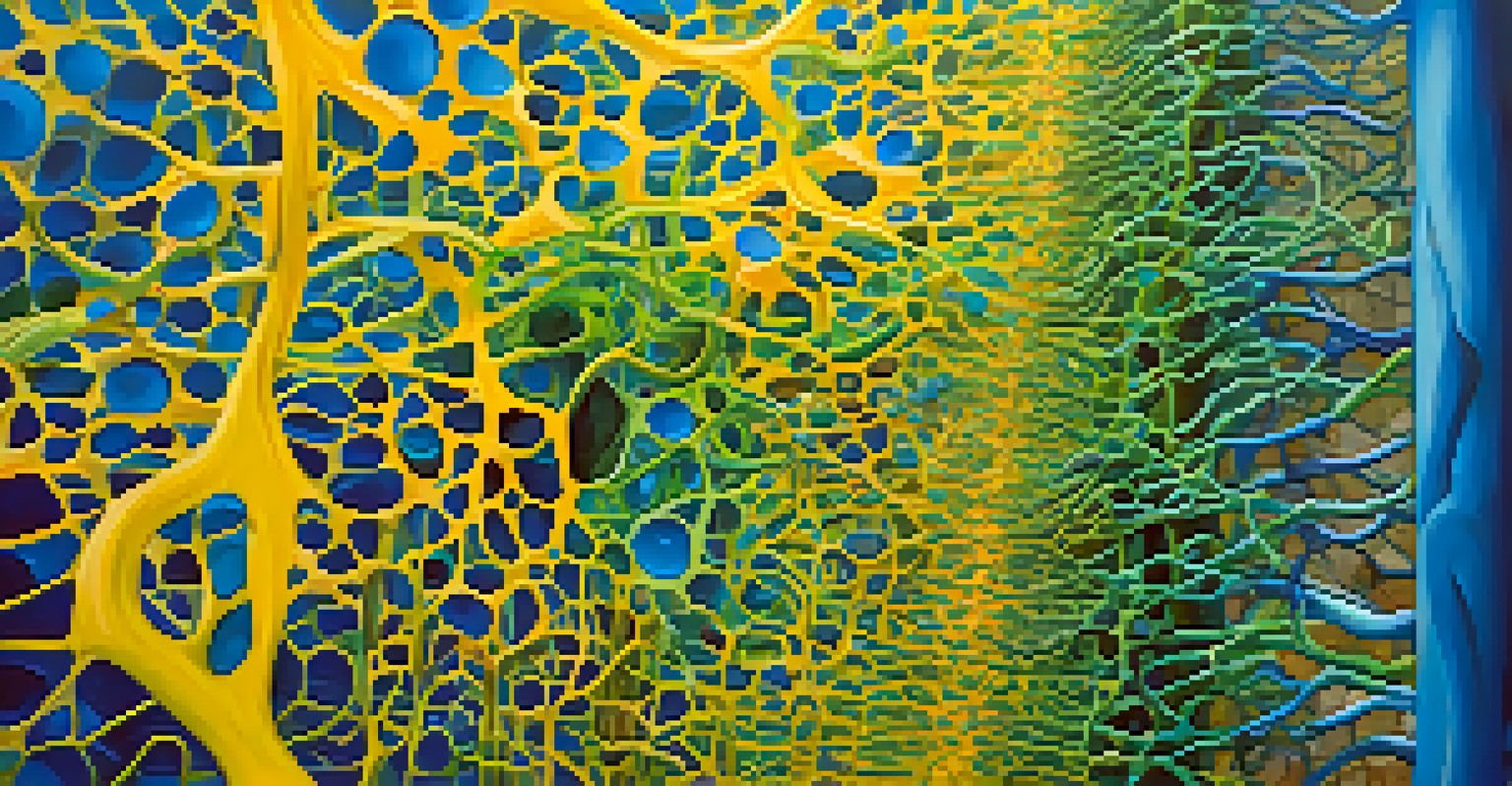Entheogens in Group Therapy: Enhancing Collective Healing

Understanding Entheogens and Their Role in Healing
Entheogens are substances that can induce altered states of consciousness, often used in spiritual or therapeutic contexts. They have been gaining attention for their potential to facilitate deep emotional and psychological healing. By fostering introspection and connection, these substances can help individuals confront and process their traumas in a supportive environment.
The greatest discovery of my generation is that a human being can alter his life by altering his attitude.
In group therapy, entheogens can create a shared experience that deepens interpersonal bonds among participants. This collective journey not only enhances individual healing but also promotes a sense of community. The shared vulnerability can transform the dynamics of the group, making healing a joint endeavor rather than a solitary struggle.
However, it’s essential to approach the use of entheogens with care and respect. They are not a magic bullet, but rather tools that can aid in the therapeutic process when used responsibly. Understanding their effects and setting appropriate boundaries is crucial to ensure a safe and effective healing environment.
The Science Behind Entheogens and Emotional Healing
Research has shown that entheogens can promote neuroplasticity, the brain's ability to reorganize itself by forming new connections. This is particularly relevant in therapy, where breaking old patterns of thinking and behavior is necessary for healing. By enhancing neuroplasticity, these substances may help participants experience breakthroughs in their emotional and psychological states.

Additionally, entheogens can increase the production of certain neurotransmitters, such as serotonin, which plays a vital role in mood regulation. This biochemical shift can lead to enhanced feelings of well-being and connectedness during therapy sessions. Participants may find themselves more open to discussing difficult topics, leading to a more profound therapeutic experience.
Entheogens Aid Emotional Healing
Entheogens can facilitate deep emotional and psychological healing by promoting introspection and community support.
While the science is promising, it’s important to highlight that individual experiences with entheogens can vary widely. Factors such as personal history, mental health status, and the therapeutic setting all play significant roles in shaping outcomes. Therefore, a tailored approach is essential to maximize benefits while minimizing risks.
Creating a Safe Space for Group Experiences
Safety is paramount when incorporating entheogens into group therapy. Facilitators must establish clear guidelines and ensure that all participants feel comfortable and respected. This includes creating a welcoming environment that encourages open communication and trust among group members.
Healing requires from us to stop struggling, but to enjoy life more and endure it less.
Pre-session preparation is crucial, as it helps participants understand what to expect and addresses any concerns they may have. Grounding exercises, educational discussions about the substances, and establishing a group agreement can set the stage for a positive experience. When individuals feel psychologically safe, they are more likely to engage fully in the process.
During the session, skilled facilitators can guide participants through their experiences, providing support and reassurance. This can involve checking in with members to address any discomfort or anxiety that arises. By fostering a nurturing atmosphere, facilitators can help participants navigate their journeys towards healing more effectively.
The Role of Integration in Group Therapy
Integration is the process of making sense of and incorporating insights gained during entheogenic experiences into everyday life. In a group therapy context, this is particularly valuable, as shared reflections can deepen understanding and reinforce learning. It encourages participants to discuss their experiences openly, fostering community and support.
Integrating these experiences can help individuals identify patterns, triggers, and areas for growth. Group discussions can provide diverse perspectives, helping participants to see their experiences through different lenses. This collective wisdom often leads to richer insights than one might gain alone.
Safety is Crucial in Group Therapy
Creating a safe and supportive environment is essential for effective group therapy experiences involving entheogens.
Facilitators play a key role in guiding integration sessions, helping participants articulate their thoughts and emotions. They can introduce tools and practices that promote ongoing reflection and healing. This continual process of integration can significantly enhance the long-term benefits of using entheogens in therapy.
Challenges and Ethical Considerations
While the potential benefits of using entheogens in group therapy are significant, there are also challenges and ethical considerations to navigate. One major concern is ensuring that all participants are mentally and emotionally prepared for such experiences. Not everyone may be suited for entheogenic therapy, and thorough screening is essential to prevent harm.
Furthermore, the legality and accessibility of entheogens can pose hurdles for practitioners. Many substances remain classified as illegal in various regions, complicating their use in therapeutic settings. Practitioners must stay informed about legal regulations and approach these substances with caution and integrity.
Ethical considerations also extend to informed consent and transparency about potential risks. Participants should be fully educated about what they are engaging in, with clarity on both the possible benefits and drawbacks. Open dialogue about these topics fosters trust and empowers individuals to make informed choices about their healing journeys.
Case Studies: Successful Group Therapy Experiences
Real-world examples can provide valuable insight into the effectiveness of entheogens in group therapy. For instance, some therapy groups have reported transformative experiences where participants bonded over shared journeys, leading to lasting friendships and support networks. These connections often extend beyond the therapy sessions, creating a robust community of healing.
In one case study, a group dealing with grief utilized a specific entheogen to explore their feelings of loss together. Participants reported breakthroughs in understanding their grief and found solace in knowing they were not alone in their struggles. The collective experience helped them move through their emotions in a way that felt supported and safe.
Integration Enhances Therapeutic Benefits
The process of integrating insights gained from entheogenic experiences is vital for maximizing long-term healing outcomes.
Such case studies highlight the potential for entheogens to facilitate deep emotional work in a group context. They serve as powerful reminders of the healing power of shared experiences, encouraging further exploration in therapeutic settings.
Looking Ahead: The Future of Entheogens in Therapy
As research into the therapeutic benefits of entheogens continues to grow, the future of their use in group therapy looks promising. More practitioners are beginning to recognize their potential as tools for healing, leading to an increase in innovative therapeutic models. This shift could pave the way for broader acceptance and integration within mental health practices.
Additionally, as societal attitudes towards mental health evolve, the stigma surrounding entheogens may diminish. This could lead to more open discussions about their use in therapy, allowing for greater exploration of their benefits. The emergence of regulatory frameworks may also facilitate safer and more structured therapeutic settings.

Ultimately, the future will depend on responsible practices, ongoing research, and a commitment to ethical considerations. By prioritizing safety, education, and community, entheogens can become an integral part of a holistic approach to mental health and collective healing.